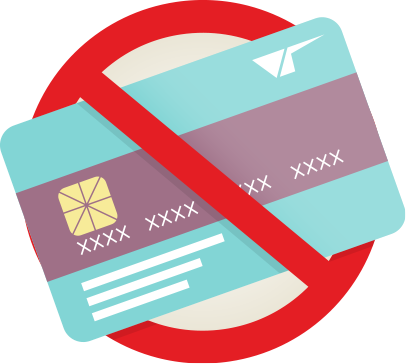Market Research
Get all the information you need about market research. A well framed strategy acan yield results that can help any business grow exponentially.
What is Market Research?
Market research is a method of calculating and finding the viability of any business, service, and product through research done at the customer-level. The process allows businesses and brands to determine and capture potential markets and learn about consumers’ feedback for evidence-based campaigns, marketing, and production.
Because market research is not a new phenomenon, it has existed for close to a century now. Here's a quick example from the 1900s vault.
'Fleece of Gold' written by the mail guru Haldeman-Julius sold 5000 copies in the first launch! He did little market research and discovered that ad copies do make a difference. But what he did is not the way you'd expect.
Instead of changing his ad copies on the newspaper and print media, he changed the title copy of the book to 'Quest for a Blond Mistress.' And he'd sit back and study the response. How was the response? Well, he sold more than 50,000 copies by merely changing the title of the book.

Sales and marketing teams, business developers and analysts, etc. have been making similar decisions based on their market research. The advent of online & offline survey apps has made it possible for organizations to conduct brisk market research at affordable costs. So, what's the key takeaway from the study? Change the copy of your ad? Absolutely no...! It's using market research before making important decisions, such as changing your titles.
Don't trust our words? You don't have to! But we're sure you'd believe the king of business marketing Clayton Christensen, who says '95 % of the new products fail.'
Many products fail despite market research because brands don't think the way customers think. According to Clayton, 'we have to crawl into our potential customers' skin, and go with them as the day passes by, asking questions as soon as they do something: WHY DID YOU DO THIS WAY.'
'Did your customers buy coffee mugs at 1 pm? Ask why they bought it at one and not 3, and where are they heading with the mug!' 'Did they buy magazines while travelling? Ask why magazines and not books?'
When you have research on what jobs the products do— you can anticipate your products and make them more promising.
Data gives you a reliable back-up to research your brand positioning, gain business insights, measure campaign response, etc., whether you're a part of fortune 500 companies or a new start-up, a public organization or private venture, or an NGO mission or an entrepreneurial journey.
Learning market research tips and tricks can help you make your cash register ringing. Here's what you need to know about online market research and tools for market research.
Employing online tools for gathering data provides evidence for the credibility of answers to the raised questions. It ensures the integrity of research behind the whole process. Apart from this, these tools allow businesses to collect data from anywhere in the world at their comfort. You can enjoy customized features as per your requirements rather than just setting up questionnaires.
Types of Market Research
Selecting the right tool for collecting data ensures that you are on the right track to achieving your end goal. Here are three types of tools for data collection that you can consider as per your requirements.
Paper-based Surveys
Do you have any information on hand? If yes, where is it coming from? If not, are you planning to receive new data? If yes, is the information the first-hand data of your market and customers? If the data you collect is new and fresh, then it's primary market research (PMR)!
- Feedback coming directly from your customers? It's PMR!
- Gathered fresh data on the mood of the target audience group? It's PMR!
- Surveys giving insight on ease-of-business? It's PMR!
- Need to launch a product and receive its first-hand review? It's PMR!
- Interview a team member or a suspect? It's PMR!
Every data you receive in the raw form is primary data. You have to work around this data so that it matches your business needs. Primary market research is further subdivided into two groups:
#1 Exploratory research
Before you launch a considerable field market research campaign, would you not want to know if you're prepared for it? Well, exploratory analysis deals with the problems you could face as an organization. It has less to do with customers and their trends. Generally, this type of research is not conducted on a massive scale.
For example, you want to set-up a field research campaign. It's anyway not going to be easy. So, you conduct a survey within your team to get insight on how to do field research efficiently. Exploring details to self-help your processes and move ahead firmly is a type of exploratory study.
#2 Specific research
You've done your exploratory research? Congratulations, you're now up for specific research. With this primary market research type, you can dive into precise issues, segment your audience, and survey them to solve your suspected problems.
For example, you're finally ready for field market research where you're up discovering your segmented audience's favorite ice-cream flavor. The research is quite specific and gives meaningful insight into a particular problem.
Online Data Collection Tools
Do you already have data at your disposal? Yes! You want to draw conclusions from the existing data? Yes! Well, what you have is the secondary market research (SMR) data.
- Reviewing an already case study? It's SMR!
- A judge going through the old records and details of the case? It's SMR!
- Businesses buying existing survey guides and stats to make decisions? It's SMR!
- Is a new BA reading the old sales resources collected from ex-BA? It's SMR!
- Researching Edison's papers on electricity to make coolers? It's SMR!
Market statistics, trends report, sales data, industry content— you already have data to make conclusive arguments and get your business or motive rolling. The secondary market research is subdivided into three-sources:
#1 Public Sources
You want to get the most reliable resources around, and at free of cost! Is it possible? Of course, with public sources. These sources are readily accessible materials that can prove as the bang for your buck. They are free to find, read, share, and link mentions.
For example, you're surveying the impact of CoronaVirus in particular demography to spread your idea of organic sanitizers. Government statistics and data from health institutes like WHO are arguably reliable researches to draw your conclusion. Helpful information from the familiar public sources shall make it easier for your business to stride further.
#2 Commercial sources
You don't want to only rely on public information. So, you look for solid, portable, and distributable data, though that may cost you money. What do you do? You reach commercial research agencies like Statista, Forrester, Pew, or Gartner. These sources have ready market reports on the table, and all you have to do is start!
For example, if you're planning to start an intermodal service. How do you go about it? You need research on freight movement, means of transport, green energy, fuel-saving measures, inter-state goods transaction, and a lot more details. Buying ready-guides shall give a headstart for your business.
#3 Internal sources
You need public and commercial data to make your business up and running. But you need internal sources of secondary data to maintain your business. Your customer retention rate, average revenue per sale, the list of your customers— every data that you've collected while and within running your organization is internal research data.
For example, analyzing the health of old and new accounts can help you determine what your customers want currently. If your plastic bottle's sales are going down, you can internally research your records and develop biodegradable plastic cans for your consumers.
To know more about online market research and how it solves real-life problems, you'd like to go through GoSurvey resources that we have researched using our GoSurvey market research software. You think of any industry, and our GoSurvey research tool helps you explore the ins and outs of it.
Want to do market research and don't know where to start? Willing to pull-off surveys but don't know how to set questionnaires? Have heard a lot about market research but don't know about its practical implementation? Keep reading as we explain how market research can help grow your business.
Why is Market Research Important?
Okay! We have talked enough about ‘what is market research,’ but how is it important? Why do businesses carry out market research? Does it help them make educated decisions? Short answer, absolutely yes! As businesses go digital and number-centric— it's crucial that you understand the target audience with a data-backed plan.
Conducting market research will help you define the market parameters and meet the customer satisfaction index. Think of this: What're the vital entities in your business?
- your products,
- your customers,
- your competitors,
- and at last, you.
Market research is not only a vital tool for identifying market environments but also for giving detailed data in a standardized format for all the entities. Here's how it helps with each.
-
It lets you analyze your existing products and value-research the new ones. Research is also suitable for product conception and determining its acceptability and feasibility in the market.
-
Everything revolves around customers' needs and wants— your marketing campaigns, products, and efforts. Researching deep down their requirements help you make customer-centric decisions that are best tailored for them.
-
If you're not personalizing your services, your competitors will. Reviewing your rival's strategy and analyzing them in and out can help you cover the gaps and stay ahead of the competitors.
-
When you've collected data on all the entities, finally it's time for you to measure how your brand is performing in the market. You can forecast sales and blend them with current performance to manage your products in the pipeline. The research minimizes the risk hovering around your business.
How to do market research
There are various ways by which you can conduct market research. Most widespread of all is through market research survey tools. Knowing how to orchestrate market research using surveys will let you gather insightful data when and wherever you want. Here's the quick guide for conducting effective market research:
Step #1: Define the subject of research: why am I conducting it?
What is that you're researching? What's the problem that you're trying to gather data for? Defining the subject of your research will not only help you arrange concise survey questions but also allow your enumerators to prepare for the conduct. Generally, respondents seek survey-assistance while answering. Knowing your subject deeply, and the problem that you're trying to resolve will empower you to address all the technicalities of the market research.
If you're puzzled with setting up a research survey, arrange a short one and get it rolling through a small sample population. Check their responses, concerns and issues, and improvise to further launch to the broader audience.
Step #2: Select your respondent size: what's the size of the sample?
Your market research can go in vain if you're reaching the wrong audience. So you must use effective sampling techniques to pick the most relevant audience for your survey.
We repeat: it's the most critical process of conducting market research because of two reasons:
-
If your sample size is too small, you may have anomaly respondents who might bring irregularity to your study. So, this certainly skews the data and wastes your market research efforts.
-
If your sample size is too big, you may earn accurate results, but it can get mighty-complex for your research objective and dig deeper holes in your pockets. Would you research if its costs outweigh benefits? Absolutely no!
Technically, you may have a hard time collecting details either way. So sampling techniques help you pick random samples of individual respondents who represent the population as a whole.
Since the relevant sample frame is everything, follow these steps to have one for you:
-
-
Consider important variables of sample size
- Population size
- Confidence level
- Margin of error
- Standard deviation
-
Calculate sample size
- Determine the Z-score
- Calculate sample size using the formula: Necessary Sample Size = (Z-score)2 * StdDev*(1-StdDev) / (margin of error)2
-
Step #3: Conduct market research: meeting your marketing objectives!
Once you've set your objectives and sample size, launch your researching campaign. Use offline survey tools to get the most response. Our offline survey software ensures that you have answers from the people who don't have access to internet connectivity. The idea of reaching to remote geographies is to have effective input, not leaving out the critical voices.
Step #4: Analyze the data: interpreting the results.
If you've been good so far, but fumbles in analyzing data, the entire purpose of market research dissolves. You have to conduct in-depth analysis, tying all the loose ends to have substantial and decision-making data in your hand. Fortunately, the modern-day market research tools allow you to skim through the collected data.
You'll have various quantitative vertices to touch, including demographic details such as age, sex, income, etc. But qualitative data will depend on the type of questions you set and the answers and experiences you receive from the respondents.
Ask yourself: what's the aim of data analysis? To discover useful information from a large pool of data. Right? So unless you summarize these data and communicatively present them, it'll be hard for you to proceed with any business decision. Your interpretation of the data matters and how you interpret is how you take your organization ahead.
Step #5: Make evidence-based decisions: moving ahead calculatedly.
Once you've summarised the analytic reports, now it's time to make decisions. Since you have quality data on your table, you can move ahead taking calculated-risk in the market. Market research is not a choice anymore. Most businesses have accepted the vitality of market research, and they make sure they apply market research formula— big or small— within or outside the organization.
So collect and act!
Key benefits of market research
Answering this is as big as counting ocean droplets. There's absolutely nowhere where you can't apply market research. But we'll make it easier for you! Go through these key ten benefits of market research that can help you make well-planned deterministic moves.
1. Enhances your business position
Where does your business stand in the market? Is it struggling to compete? Is it keeping up with the pace of the market? Market research not only gives you means of entry in a new market but allows you to evaluate your business position so that you make timely-improvisations to stay in the hunt.
2. Manages your investment risks
What you spend in market research is relatively nothing against what you invest in non-researched risky areas in business. If conducted properly, market research can save you time and money, & protect against the potential-risks of volatile markets.
3. Facilitates strategic campaigns
You don't think and launch your campaigns impulsively. Every move that you make should be strongly backed by data so that you can execute and analyze your performance at each milestone. Market research facilitates strategic planning and execution at your will.
4. Spots emerging fads
You want to know the pulse of your industry, whether it's high or low. How do you do it? Market research! Data helps you spot emerging trends in the market and adapt to its needs. So it's no more about 'what you want is what you wish,' but 'what you want is what you snatch' with data-research.
5. Predicts revenue projections
Let's be honest to ourselves. It's the data that we want the most. The future numbers are the core components of predicting how you'll behave and stand in the market. With the projection data, you can focus on the most relevant market, not necessarily the largest market but the one that gives you return on investments.
6. Allows benchmark research
You want to have specific indicators to measure how you're operating in the market. Competitive, internal, functional, and general benchmarking let you analyze competitors, intra-business operations, and identical practices of the industry so that you apply the ideas to improve your business.
7. Helps analyze interacting mediums
Your customers are spending their time on potentially any touchpoint! Where do you interact with them? Which is the most efficient channel that can get you leads and conversion? Guiding you through these effective communication mediums is market research's robust suite.
8. Gives detailed-acumen of customers' taste
The tastes of your customers are always changing. Manufacturing your product/service and launching marketing campaigns that align with their preferences, minimize market-risk and lets you truly achieve your brand objectives.
9. Works as businesses' ears
Without data, your business doesn't know what's happening in the market. Market research is the eyes and ears of your business. As it gives the details of the industry at your fingertips, use them to adapt and learn from your own weaknesses. Further capitalize the newly-found research on data, customers, and products to be the leader of the pack.
10. Allows making well-informed decisions
Micro or macro— decisions can make or break your business. But why live with uncertainty lingering around when you can be sure about your future? Market research will allow you and your teams to make decisions that resonate with your goals. Afterall, having goals is not enough. But it's also essential your decisions are taking you in the particular direction.
How to do Market Research Online
Answering this is as big as counting ocean droplets. There's absolutely nowhere where you can't apply market research. But we'll make it easier for you! Go through these key ten benefits of market research that can help you make well-planned deterministic moves.
- Begin with setting your goals and objectives. No market research can start without it. Well! It can— but no guaranteed success.
- Locate your target audience and determine the ideal size of your sample frame. Most significant errors initiate at this step. Be careful!
- Select a sample frame that represents your ideal larger audience group. You can't reach all the respondents but make sure you cover enough of them to earn rich-data.
- Select a sample frame that represents your ideal larger audience group. You can't reach all the respondents but make sure you cover enough of them to earn rich-data.
- Create your questionnaire. Make sure that it sounds neutral and is not influencing.
- Explain your research objective to the researcher, so they remain impartial and non-leading throughout the collection course.
- Put screening questions in the top fold of the questionnaire to fend off anomalies and inconsistent respondents.
- Introduce questions that validate other questions of the market research.
- For qualitative research, add open-ended questions. These questions give respondents an open platform to freely voice their opinions on the subject, mostly if they aren't covered in the close-ended questions.
- Don't make a lengthy questionnaire. Testing respondents' patience is the last thing you want preceding research fill-ups.
- Once you've hands on the data, deploy skilful data-analyzers to summarise the details and come up with conclusive findings.
- Validate the findings and check if they meet your research objectives. Find the difference in margin of error and make decisions accordingly.
Market research with GoSurvey
Making your mind for market research is not enough. The methodology that you pick for your research campaign will determine if you have value for your money! So it gets even more necessary that you carefully handpick & deploy those market research methodologies that keep filling your sales register.
GoSurvey offline survey app is one of the market research tools that give you the bang for the buck. With its offline capabilities to reach respondents with no internet, you can have access to the most accurate data for streamlining your business. Here's the quick beneficial blurb of the app:
-
Solution #1 Quality data
As with the app, you have the power to reach a wider audience group to collect effective and quality data. The always-on approach of the offline app will get you through your sample frame and give qualitative details to move forward.Where does your business stand in the market? Is it struggling to compete? Is it keeping up with the pace of the market? Market research not only gives you means of entry in a new market but allows you to evaluate your business position so that you make timely-improvisations to stay in the hunt.
-
Solution #2 Laser-targeting
Your market research needs to reach the ideal audience; that's the whole and sole purpose of it. GoSurvey app lets you laser target your research to the most admissible sample group. Get granular with geographic, demographic, behavioral, and technographic targeting.
-
Solution #3 Speedy insights
Not feeling comfortable in your pockets to invest in data analyzers? Get 24/7 available reports at your fingertips and break-down the necessary vertices at will to have total control over the result.
Explore Sample Question Templates

Get started with a free trial.






